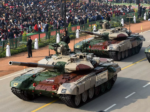Invitation to the Ram Temple Inauguration: Politics and Symbolism

Image Source: English Jagran
The forthcoming inauguration of the Ram Temple in Ayodhya, scheduled for January 22, 2024, has become a focal point of political and cultural discussions in India. Recently, the invitation extended to Prime Minister Narendra Modi to attend the event has sparked a range of opinions and questions. This article delves into the various perspectives surrounding this historic occasion and its political and symbolic significance.
The decision to invite only Prime Minister Modi to the inauguration of the Ram Temple has raised eyebrows among opposition leaders, who have questioned its exclusivity. They wonder whether this event, set just ahead of the Lok Sabha election, will become a political gathering rather than a pure religious and cultural celebration.
One key concern raised by opposition leaders, such as Congress leader Salman Khurshid, is the apparent lack of inclusivity in the invitation process. The Ram Temple holds immense significance for millions of people in India, cutting across party lines and religious affiliations. Thus, some argue that it should be seen as a national event, and the invitation should have been extended to leaders from various political parties.
Khurshid emphasized that this historic and symbolic event should be inclusive, welcoming representatives from all political perspectives to mark the significance of the temple’s completion.
In contrast, Shiv Sena (Uddhav) leader Sanjay Raut presents a different viewpoint. He argued that the need for an explicit invitation to Prime Minister Modi is unnecessary. Raut highlights that the Ram Temple’s construction is not solely the result of one individual’s efforts. Instead, it is the culmination of decades of collective endeavors by various Hindutvavadi organizations and parties. Leaders such as LK Advani and numerous karsevaks dedicated their efforts to this long and challenging journey.
Raut suggests that the presence of Prime Minister Modi at the inauguration is a natural consequence of the temple’s construction and not just a political maneuver. He believes it is essential to acknowledge the combined efforts of all who contributed to this momentous occasion.
For Madhya Pradesh Congress president Kamal Nath, the Ram Temple represents more than a political symbol; it is a cultural and spiritual emblem that transcends party lines. He emphasizes that this historical and religious site belongs to all in the country and that the completion of the temple is a moment of collective pride and joy.
From a historical and mythological perspective, DMK leader TKS Elangovan offers a distinct point of view. He argues that the birth of Lord Ram is a story from the Ramayana, which he categorizes as mythology and literature. He voices concerns that some may be trying to replace historical understanding with mythology, emphasizing the importance of preserving and comprehending history in its true context.
The inauguration of the Ram Temple in Ayodhya is a momentous occasion for India, carrying profound cultural, religious, and historical significance. The diverse range of opinions and perspectives surrounding the event reflects the complexity and diversity of Indian society and its political landscape.
As the inauguration date approaches, the discussion will likely continue to evolve, offering insight into the various ways in which people perceive this event, its political implications, and the broader implications for Indian society and culture. The Ram Temple stands as both a symbol of faith and a subject of national discourse, encapsulating the multifaceted nature of the world’s largest democracy.
Team Profile

- News Writer
- Harshit Tokas is a Political Science and International Affairs Post-Graduate with a passion for understanding and analyzing complex political landscapes. Skilled in research, data analysis, and policy development. Eager to contribute his knowledge and insights to drive positive change.
Latest entries
 English1 December 2023Ambati Rayudu Backs Ruturaj Gaikwad as a Future Leader of Indian Cricket
English1 December 2023Ambati Rayudu Backs Ruturaj Gaikwad as a Future Leader of Indian Cricket English1 December 2023Changing Tide: Pujara and Rahane Omitted from South Africa Tour Squad
English1 December 2023Changing Tide: Pujara and Rahane Omitted from South Africa Tour Squad Defence1 December 2023India Greenlights Procurement of Advanced Military Assets in Multi-billion Defence Upgrade
Defence1 December 2023India Greenlights Procurement of Advanced Military Assets in Multi-billion Defence Upgrade English1 December 2023Delhi Government Pushes for Completion of Asia’s Largest Wastewater Treatment Plant
English1 December 2023Delhi Government Pushes for Completion of Asia’s Largest Wastewater Treatment Plant









